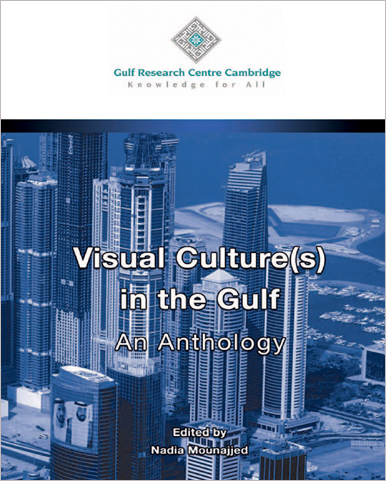Visual Culture(s) in the Gulf: An Antholog
Publisher: Gulf Research Center Cambridge
Published year: 2016
GRM year: 2012
The most widespread representation of the Gulf depicts megastructures and a network of infrastructural landscapes organized within a highly visualized urban environment. The Gulf city aspires to compete in a global market and tends to accentuate its symbolic economies making use of arts and signature architectural projects to promote its image. In this process, it works through identity negotiation between a capitalist super-modern tendency and Arab Islamic conservatism. Dubai is a good reflection of this archetype. Yet beneath this image, there exist countless narratives that are inherently integrated within regional visual practices: the particularities and cultural limitations of visual territories, local ways of seeing, imagery production, display and visualism, as well as ocular perceptions of the city and issues of physiognomy of form in urban morphology. This book is about the visual turn in the Gulf. It traces image production and consumption and examines the existing visual landscape in the region. Writings examine the wealth of visual culture(s) in the Gulf in order to explore how meaning is both made and transmitted in an increasingly visual world. Seven chapters draw together writings on the relationship between cultural production, visual practices, and the politics of representation while ultimately arguing for a multidimensional reality in the cultural production of the Gulf region. Authors depart from various theoretical perspectives on iconology, museology, urban morphology, globalization, post-colonial narratives, feminist critique, transnational cultural shifts, and identity politics
